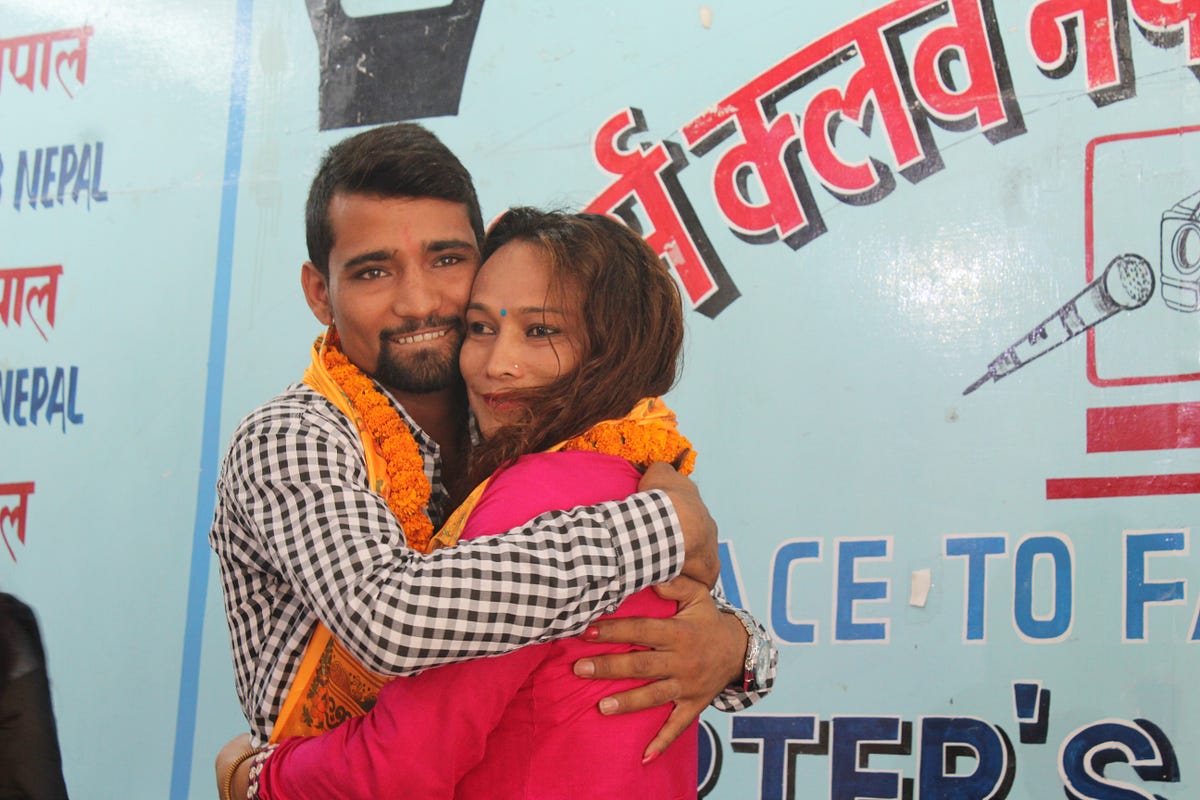
Sunil Babu Pant/Pant – Recently a headline appeared in the Nepali media translated as “Same-sex-marriage is registered with the help of a wife.” But the truth is a little more complicated than that.
First: Is it really a same-sex marriage? Before we talk about what it is or what it should be called let’s get the facts clear: A married person, Ramesh Nath from Dadeldhura district, who identifies himself as a man and married to a woman, has fallen in love with a person, Monica Shahi from Kailali, who was assigned male at birth and identifies a third gender (a category Nepal legally recognizes — and Shahi has obtained legal documents as such). Last week (on 25–07–2017), Nath and Shahi decided to get married with the consent of Nath’s wife and went all three of them to Parashurama municipality of Dadeldhura district to register their marriage.
The marriage was registered under the marriage registration act 2028 which allows for the “marriage” between a man and a woman. Nath is not divorced from his wife but his wife gave written consent to marry Shahi. According to one local news portal the bureaucrats easily registered the marriage saying: “First, the wife has given written consent and was presented here during the registration; second, Monica is a third gender so this new marriage won’t produce any child; and third, Ramesh is a man and Monica is third gender woman”.
I have couple of observations to make:
1) I am not surprised at all to see the Nepalese bureaucrat’s laid back and relaxed attitudes on most of the aspects of this case. That they are concerned with procreation in a second marriage should really be none of their business — but indicates some of their personal notions of what a relationship is.
2) South Asians are master to keeping things flexible, not fixed. Hence the interpretation of the law and trying to fit Ramesh-Monica’s marriage registration into it is to be expected to some extent. It’s both a strength and a weakness of the system.
3) I believe, even though the terminology “same-sex marriage” is used, it is not actually understood as same-sex marriage by the individuals involved — or the bureaucrats. However activists, reporters, and others are just copying ‘western’ terminologies without giving a serious thought while using it for Nepali context. They also do it because of lack of “appropriate South Asian term” we can translate easily into English and vice-versa. In a legal system that acknowledges three genders/sexes (there’s only one term in the Nepali language for both sex and gender), this poses some important questions for how relationships can or should be acknowledged while same-sex relationship recognition remains under consideration in a government committee.
So, to call it a “same-sex marriage” right now is not necessarily accurate or respectful. Shahi does not identify with the male sex she was assigned at birth — she identifies as a third gender woman. She has also been legally recognized as such by the government — as have others. The history of activism for including gender and sexual minorities in Nepal has been one of flexibility and creativity as much as it has been one of courage and traditional advocacy routes. While it’s important to celebrate that government officials have respected Shahi and Nath’s relationship, it’s also important not to slap an inaccurate — even if convenient — label on it. Social and political progress does not need to be linear to be important. The same-sex marriage committee in Kathmandu should take this as a signal that the results of their work are long overdue, and the political flexibility around the country is ready for official sanction to be given to all kinds of relationships between consenting adults.
Thank you and Namaste!
Copyright © All right reserved to pahichan.com Site By: Sobij.